Crocs: Ancient Predators in a Modern World (Photos)
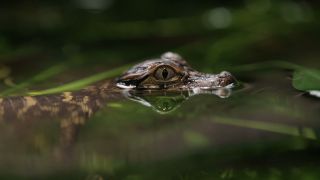
Exhibition entrance
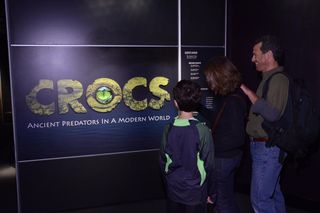
"Crocs: Ancient Predators in a Modern World" is a new exhibition exploring the complex lives of crocodilians — the group including crocodiles, alligators, caimans, and gharials — their evolutionary history, biology, behavior, and precarious relationships with human societies.
[Read the full story on these predators and their ancient relatives.]
Siamese crocodile (Crocodylus siamensis)
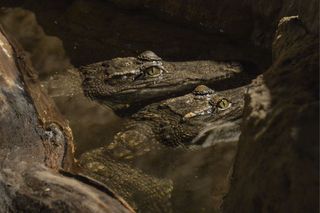
One of the most endangered crocodilian species, this crocodile has been eliminated from most of its historic range by hunting. Small populations remain in Cambodia, Laos, Thailand, and East Kalimantan.
American alligator hatchlings (Alligator mississippiensis)

Unlike birds and mammals, an alligator's sex is not determined at conception. The temperature at which eggs are incubated is the key to producing male or female babies.
American alligator hatchlings (Alligator mississippiensis)
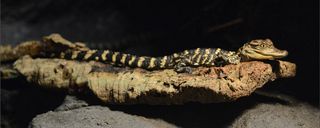
Eggs incubated at 90 degrees Fahrenheit develop into males; higher or lower temperatures produce an increasingly large proportion of female alligators. American alligators inhabit the southeastern United States.
[Read the full story on these predators and their ancient relatives.]
West African dwarf crocodile (Osteolaemus sp.)

Unlike most crocodilians, these shy predators often hunt on land, prowling the forest at night. Growing up to 6 feet (1.8 meters) long, they live in tropical hardwood forests in central West Africa.
Sign up for the Live Science daily newsletter now
Get the world’s most fascinating discoveries delivered straight to your inbox.
Central African slender-snouted crocodile (Mecistops sp.)

These crocs live in rivers and coastal waters surrounded by dense vegetation, often basking on logs overhanging water and leaping into the pool at the first sign of danger. Males reach lengths up to 13 feet (4 meters).
Freshwater crocodile (Crocodylus johnsoni)
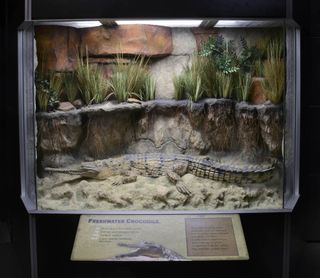
Known as "freshies," these 9-foot-long (2.7-meters-long) crocodiles are smaller and less imposing than Australia's giant saltwater crocodiles.
[Read the full story on these predators and their ancient relatives.]
Freshwater crocodile (Crocodylus johnsoni)

"Freshies" usually keep to inland rivers and small lakes to avoid competition with the "salties" that dominate coastal waters.
Dwarf caiman (Paleosuchus palpebrosus)
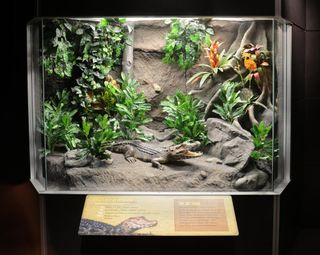
The smallest living species of crocodilian — males grow to be 4 or 5 feet (1.2 or 1.5 meters) long — dwarf caimans make up for their small size by sporting heavy armor in the skin of the back and belly that protects them from predators and rough terrain. This forest dweller lives in the Amazon and Orinoco river basins of South America in shallow forest streams.
[Read the full story on these predators and their ancient relatives.]
Indian gharial (Gavialis gangeticus)

The name "gharial" comes from the Hindi word for pot and refers to a bowl-shaped cartilaginous growth on the tip of the snout. Only sexually mature males develop this ghara, which may act as a resonator to help amplify sounds used in social communication. They live in rivers in India and Nepal, and males grow to 18 feet (5.5 meters) or more.
Indian gharial (Gavialis gangeticus)
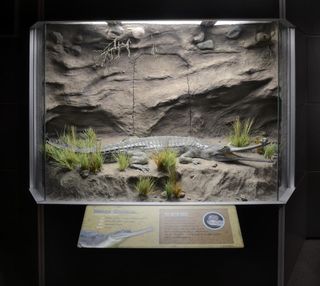
These animals live in rivers in India and Nepal, and males grow to 18 feet (5.5 meters) or more.
Most Popular



